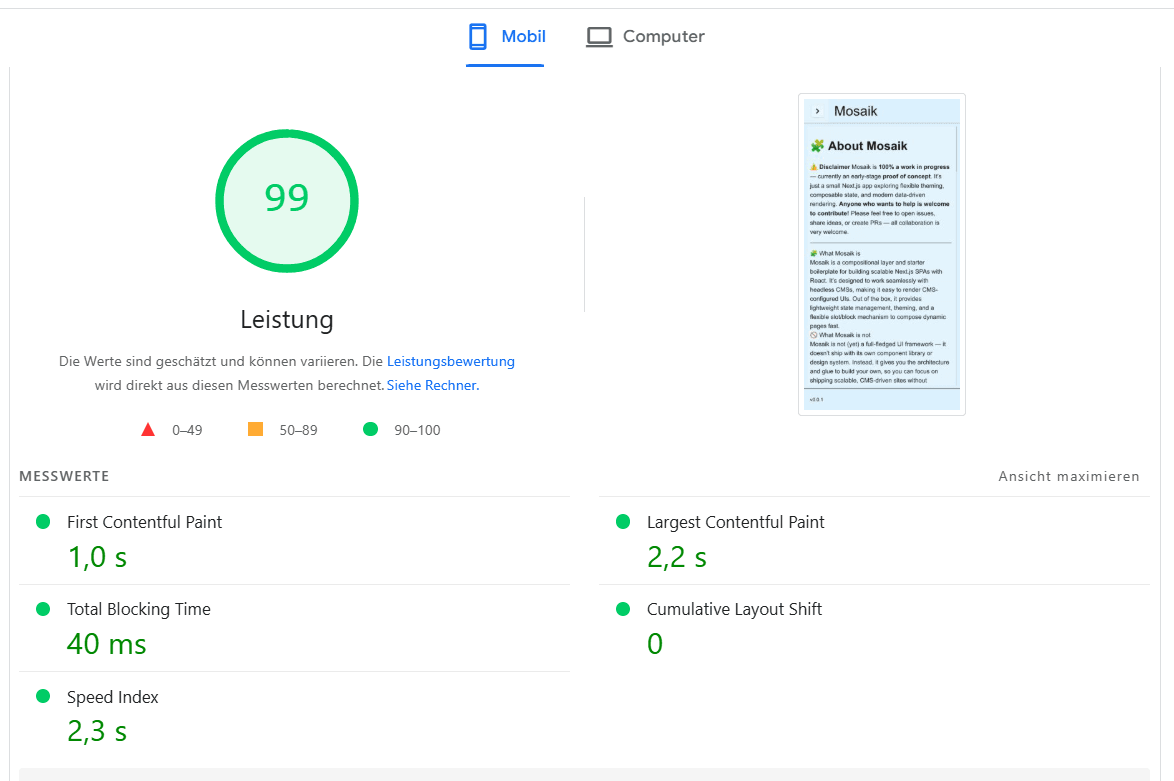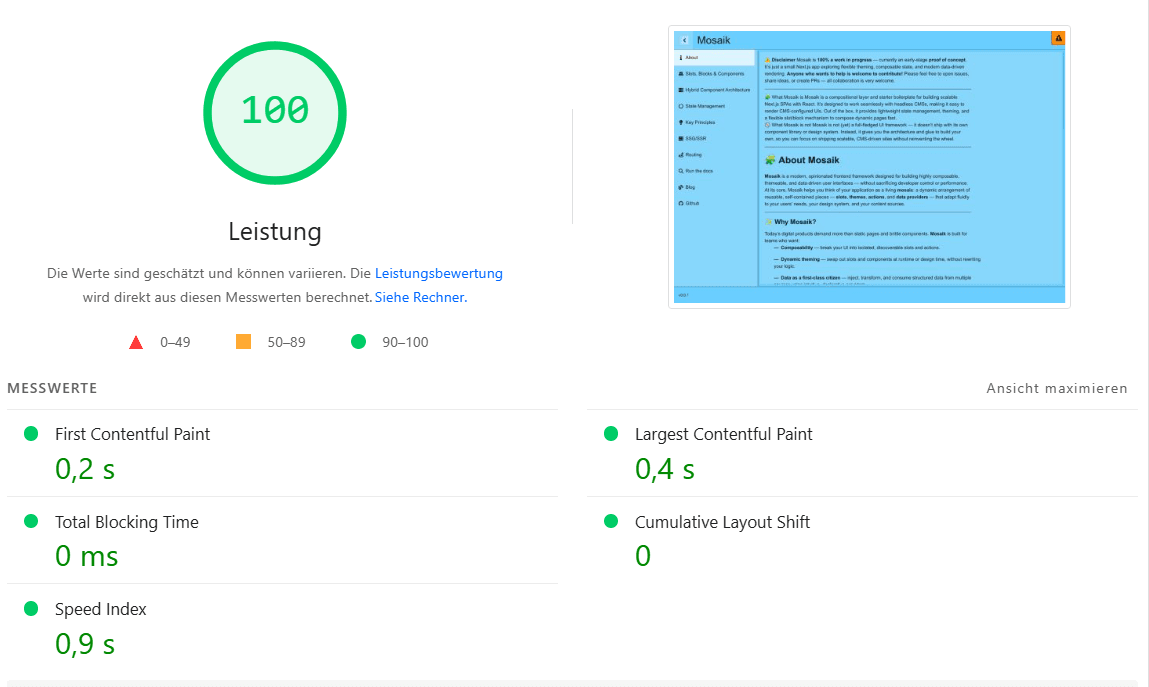🧩 About Mosaik
⚠️ Disclaimer Mosaik is 100% a work in progress — currently an early-stage proof of concept. It’s just a small Next.js app exploring flexible theming, composable state, and modern data-driven rendering. Anyone who wants to help is welcome to contribute! Please feel free to open issues, share ideas, or create PRs — all collaboration is very welcome.
🧩 What Mosaik is
Mosaik is a compositional layer and starter boilerplate for building scalable Next.js SPAs with React. It’s designed to work seamlessly with headless CMSs, making it easy to render CMS-configured UIs. Out of the box, it provides lightweight state management, theming, and a flexible slot/block mechanism to compose dynamic pages fast.
🚫 What Mosaik is not
Mosaik is not (yet) a full-fledged UI framework — it doesn’t ship with its own component library or design system. Instead, it gives you the architecture and glue to build your own, so you can focus on shipping scalable, CMS-driven sites without reinventing the wheel.
Mosaik is a modern, opinionated frontend framework designed for building highly composable, themeable, and data-driven user interfaces — without sacrificing developer control or performance.
At its core, Mosaik helps you think of your application as a living mosaic: a dynamic arrangement of reusable, self-contained pieces — slots, themes, actions, and data providers — that adapt fluidly to your users’ needs, your design system, and your content sources.
✨ Why Mosaik?
Today’s digital products demand more than static pages and brittle components. Mosaik is built for teams who want:
- Composability — break your UI into isolated, discoverable slots and actions.
- Dynamic theming — swap out slots and components at runtime or design time, without rewriting your logic.
- Data as a first-class citizen — inject, transform, and consume structured data from multiple sources using intuitive, declarative providers.
- Isomorphic rendering — render the same building blocks on the server for fast, SEO-friendly output, but hydrate them on the client for rich interactivity.
- Flexibility — use Mosaik’s minimal conventions to shape your own design system, your own CMS backend, and your own rendering logic — no lock-in.
and of course speed
🧩 Key Concepts
✅ Slots
Every piece of UI is a slot: an isolated, replaceable area you can render with a themed component. Want to restyle your Header, Sidebar, or ListItem? Just swap the slot renderer.
✅ Themes
Themes are structured maps of slots, tokens, and design rules. Mosaik’s theme system lets you dynamically switch components or styles based on user preferences, brand context, or device mode.
✅ Actions
Actions describe the possible interactions in your app: they’re exposed by providers and consumed by views. This makes it trivial to conditionally render buttons, toggles, or menus based on your app’s state.
✅ State Providers
Manage local or global app state using React’s modern useReducer pattern, with clear boundaries for server vs. client responsibilities.
✅ Data Providers
Connect your views to any source: a headless CMS, an API, or static JSON. Providers abstract data fetching, shape-checking, and caching so your components stay clean and declarative.
🔗 Where Mosaik Fits
Mosaik is not a new rendering engine — it’s a compositional layer that lives on top of React (and frameworks like Next.js). It embraces React Server Components and modern React patterns for hybrid static + dynamic rendering.
Whether you’re:
- Building a marketing site with personalized sections,
- Crafting a dashboard with dynamic widgets,
- Or assembling a fully CMS-powered app that editors can reconfigure at runtime…
Mosaik gives you the primitives to scale it all elegantly — without rigid page builders or monolithic component trees.
🚀 Built for teams
Mosaik works best when designers, developers, and content editors collaborate:
- Designers define slots and themes.
- Developers wire up state, actions, and data providers.
- Editors feed structured content via your CMS of choice.
Everything stays decoupled — yet works seamlessly together.
🗂️ What’s next?
- Dive into Mosaik by running the project locally
- Discover best practices for mixing server-side rendering with client-side interactivity.
Learn how to wire up a headless CMS.(wip)See advanced examples of how to override, merge, and reuse slots across different contexts.(wip)

